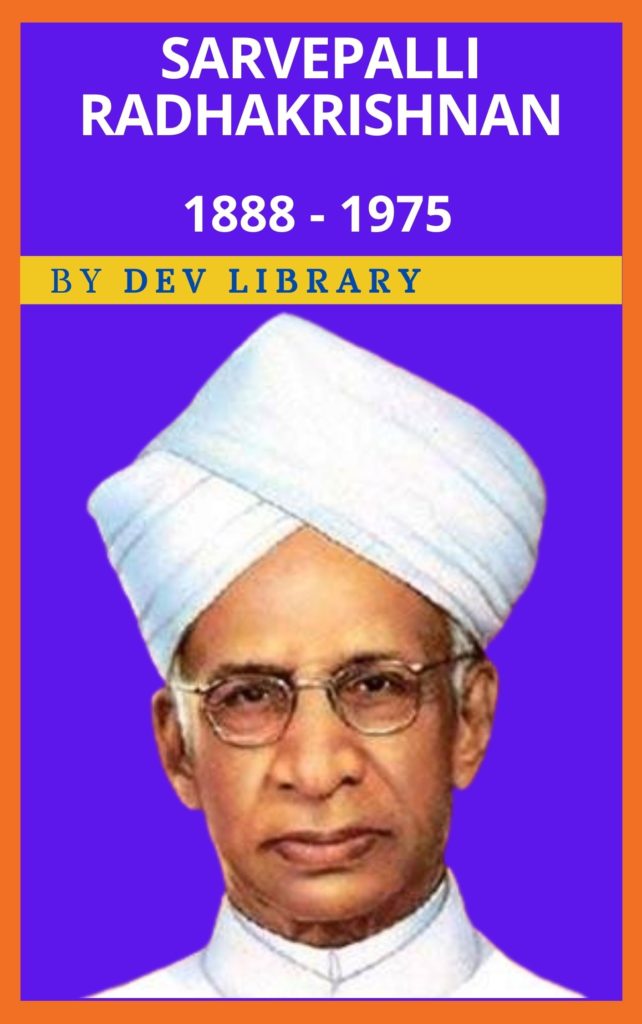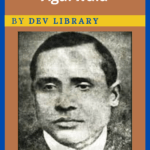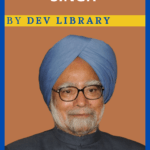Education is a life-extending process. It is not possible to build a stable society without education. Education is one of the major factors in the transition of humankind. Teachers play an important role in taking society forward on the path of progress through the root of education. Dr.° Sarvepalli Radhakrishnan is a world-renowned educationist, philosopher, and teacher who has brought light to society through education.
Read Also: ড° সৰ্বপল্লী ৰাধাকৃষ্ণণ জীৱনী – স্বাধীন ভাৰতৰ ১ম গৰাকী উপ-ৰাষ্ট্ৰপতি | Sarvepalli Radhakrishnan

Biography of Sarvepalli Radhakrishnan
| Name | Dr.° Sarvepalli Radhakrishnan[1] |
| Date of Birt | September 5, 1888 |
| Place of Birth | Thiruttani, Madras (now Chennai, Tamil Nadu) |
| Father’s Name | Sarvepalli Veeraswami |
| Mother’s Name | Sarvepalli Sitamma |
| Education | 1) Lutheran Mission School, Tirupati 2) Elizabeth Badman Bhuris College, Vellore 3) Christian College, Madras 4) University of Madras |
| Awards | 1) Knight ‘Title’ (1931) 2) Bharat Ratna (1954) 3) Nominated for the Nobel Prize several times 4) Templeton Award (1975) 5) D.L title at Oxford University (1952) |
| Died | 1975, April 17 |
Early Life of Sarvepalli Radhakrishnan
Sarvepalli Radhakrishnan was born into a Telugu Brahmin family on September 5, 1888 in Thiruttani area of Madras. His father’s name was Sarvepalli Veeraswami and his mother’s name was Sarvepalli Sitama. His father was a general employee at work.
Sarvepalli Radhakrishnan primary education was at K. V. High School at Thiruttani. He started his formal education in 1896 at The Lutheran Missionary School in Tirupati. Radhakrishnan, who studied at The Lutheran Missionary School from 1896 to 1900, later studied philosophy at Vellore College from 1900 to 1904 and studied philosophy at Madras Christian College from 1904 to 1908. Sarvepalli Radhakrishnan was a talented and intelligent student since his childhood. Importantly, Sarvepalli Radhakrishnan studied Philosophy as well as Sanskrit and Hindi. It may be recalled that Radhakrishnan wrote his bachelor’s degree thesis. This research paper highlighted the depth of Radhakrishnan’s philosophical thinking. The theme of his research paper was “The ethics of the Vedānta and its metaphysical presuppositions”. It was intended to be a reply that the Vedanta system had no rooms for ethics. Radhakrishnan’s thesis was published when he was only twenty.
Also Read : Biography of Rajendra Prasad
Career of Radhakrishnan
After completing his master’s degree, Sarvepalli Radhakrishnan, who later joined Madras Presidency College in 1909 as a teacher in a temporary post in Malayalam language, later joined Mysore University as a lecturer in the department of philosophy. He was subsequently appointed professor of the king George V chair of Mental and Moral Science at the department of Calcutta University in 1921 and served till 1931. He served as vice chancellor of Andhra University from 1931 to 1936. In 1936 Sarvepalli Radhakrishnan was named Spalding Professor of Eastern Religion and Ethics at the Oxford University, England and was elected a Fellow of All Souls College. That same year, and again in 1937 he was nominated for the Nobel Prize in Literature. Later he subsequently served as vice chancellor of Banaras Hindu University till January 1948 at the invitation of Pandit Madan Mohan Malaviya in 1939 respectively.
Importantly, during the long period of his association with the teaching profession, Sarvepalli Radhakrishnan tried to usher in a renaissance by delivering theoretical statements at various institutions and universities. Dr.° Sarvepalli Radhakrishnan also served as president of UNESCO and president of the University Commission of India in 1948-49. Not only this, Dr.° Radhakrishnan studied Indian thoughts in depth and passed them on to the readers through Sahityaraji. The books he wrote were – The Philosophy of Rabindranath Tagore published in 1918, The Reign of Religion in Contemporary Philosophy published in 1920, Indian Philosophy published in two editions in 1923 and 1927, The Hindu view of Life published in 1926, The Religion we Need (1928), published in 1929 Kalki or The Future of Civilization, published in 1932, An Idealist view of Life, East and West in Religion in 1933, Freedom and Culture and The Heart of Hinduism in 1936, Sarvepalli Radhakrishnan wrote his autobiography “My Search for Truth”, Gautama the Buddha in 1938, Eastern Religion and Western Thought in 1939, published in 1944 Introduction to Mahatma Gandhi by analyzing Gandhi’s life and work. India and China and Education, Politics and War, The Religion and Society in 1947, The Bhagavad-Gita in 1948, Great Indians in 1949, The Dhammapada in 1950 and The Religion of the spirit and the Worlds Need in 1952.
Political Career
Apart from being a philosopher, teacher, Dr.° Sarvepalli Radhakrishnan also actively participated in the field of politics. Dr° Sarvepalli Radhakrishnan introduced a new trend in the history of India’s foreign policy by holding the post of Foreign Minister in the union cabinet of the then Prime Minister of India Jawaharlal Nehru. He also served as India’s ambassador to Soviet Russia from 1949 to 1952. He was also elected to the Constituent Assembly of India. He held the post of Vice President of India twice from 1952 to 1956 and from 1957 to 1962. He subsequently held the presidency of India’s highest constitutional office in 1962.
Significantly, despite holding the presidency, India’s highest constitutional position, Dr.° Sarvepalli Radhakrishnan, identified himself as a teacher. Radhakrishnan took the teaching profession with great respect. It may be recalled that while holding the highest constitutional post as president, many of Radhakrishnan’s friends and students had sought permission to celebrate his birthday. But Radhakrishnan expressed his views and replied… Instead of celebrating my birthday, it would be my proud privilege if September 5th is observed as Teacher’s Day, as a special day for teachers. Since then his birthday i.e., September 5 has been celebrated as Teachers’ Day.
Dr.° Sarvepalli Radhakrishnan was a man who was confident of liberal religious views and secularism. Though he hold the highest post in the country as the President of India through active participation in the political arena, he was known to be a great philosopher and teacher among the general public in India as a parallel to the world. Importantly, Sarvepalli Radhakrishnan, a politician, teacher, philosopher, a wide-study person, was nominated for the Nobel Prize 27 times, nominated 11 times for the Nobel Peace Prize and 16 times for the Nobel Prize in Literature. It may be recalled that The Independent India’ Saheb, the British government awarded Dr° Sarvepalli Radhakrishnan the title knight in 1931. Radhakrishnan was awarded India’s best prize Bharat Ratna in 1954. He was also asked to award the Templeton award in February 1975. Importantly, Mother Teresa was awarded with this award first. Radhakrishnan was the third person to win the Templeton award. In addition, Dr.° Sarvepalli Radhakrishnan was conferred the title of DL by Oxford University in 1952 with the status of Amritsar Professor.
Marriage and family
Radhakrishnan was married to Sivakamu, a distant cousin, at the age of 16. As per tradition the marriage was arranged by the family. The couple had five daughters named Padmavati, Rukmini, Sushila, Sundari, and Shakuntala. They also had a son named Sarvepalli Gopal who went on to a notable career as a historian. Many of Radhakrishnan’s family members including his grandchildren and great grandchildren have pursued a wide range of careers in academic, public policy, medicine, law, banking, business, publishing and other fields across the world. Shivakamu died on 26 November 1956.
Conclusion
Dr.° Sarvepalli Radhakrishnan, who holds a deep-thinking personality, breathed his last at a nursing home on April 16, 1975. Dr.° Sarvepalli Radhakrishnan, known not only as a great man of India but of the whole world. He is not physically present, but his work will always be alive among the people of India. Radhakrishnan’s intellectual approach is popular and still his thoughts are relevant to everyone today due to his intellectual views, hard work and humble behaviour, because of which he is considered to be a thinker, philosopher, politician, a person of great personality who has contributed to the field of literature.
FAQ
1. When and where was Sarvepalli Radhakrishnan born?
Ans: Radhakrishnan was born into a Telugu Brahmin family on September 5,1888 in Thiruttani area of Madras.
2. Who is Sarvepalli Radhakrishnan?
Ans: Sarvepalli Radhakrishnan was an Indian philosopher, educationist and statesman who served as the second president of India.
3. When do we celebrate Teachers Day?
Ans: September 5.
4. Why is Radhakrishnan’s birthday is celebrated as Teachers Day?
Ans: In India September 5th the birth date of Sarvepalli Radhakrishnan is celebrated as Teachers Day as a tribute to the contribution made by teachers to the society.
5. When did Sarvepalli Radhakrishnan sworn in as the Second President of India?
Ans: On May 11, 1962, Radhakrishnan was elected as the second president of India succeeding Rajendra Prasad, who was the first president of independent India.
6. Who was the first teacher president of India?
Ans: Dr. Sarvepalli Radhakrishnan.
7. In which year Radhakrishnan was awarded with Bharat Ratna Award.
Ans: In 1954 Radhakrishnan was awarded with Bharat Ratna Award.
8. When was the first Teachers Day celebrated?
Ans: The first Teachers Day is celebrated in India in 1962.
9. When did Sarvepalli Radhakrishnan died?
Ans: Sarvepalli Radhakrishnan died on April 16, 1975.

Hi, I’m Dev Kirtonia, Founder & CEO of Dev Library. A website that provides all SCERT, NCERT 3 to 12, and BA, B.com, B.Sc, and Computer Science with Post Graduate Notes & Suggestions, Novel, eBooks, Biography, Quotes, Study Materials, and more.






